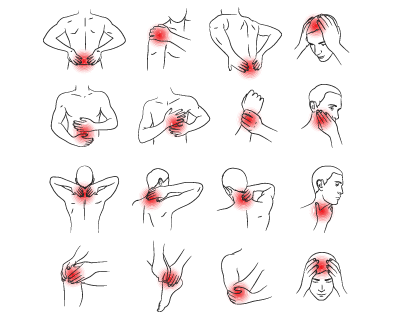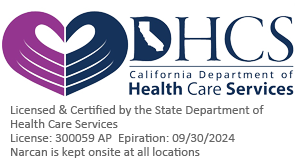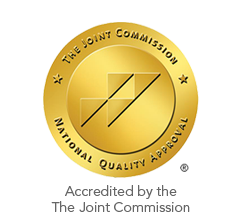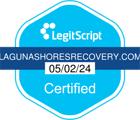Oxycodone Addiction Treatment
What is Oxycodone?

History of Oxycodone
The medical use of oxycodone dates back to the turn of the 20th century. Scientists went on to develop oxycodone to avoid the risk of drug addiction, such as had happened with heroin. The first documented use of oxycodone was in 1917. Unfortunately, oxycodone proved to have similar addictive properties. The history of its capacity for addiction can be dated back to the 1960s.
The abuse of oxycodone has been an ongoing problem since the early 1960s when the government classified it as a Schedule II drug. In the 1990s, the Food and Drug Administration approved a drug called OxyContin. OxyContin’s active ingredient is oxycodone, but it was formulated as a product to provide pain relief for a longer period. Due to its addictive nature, oxycodone and all products that contain it are a Schedule II controlled substance in the United States and are highly controlled by the Drug Enforcement Agency.
When the long-acting version of oxycodone was introduced to the market in 1996, concerns about illicit abuse began to increase. Taking crushed tablets of Oxycodone results in a faster effect, which can be highly addictive to those susceptible to drug abuse. Now abuse of drugs has spread across the country and trickled down to other opioids.
What is Oxycodone Used For?
In a few instances, people can experience pain that lasts a long time and can cause severe problems. This is referred to as chronic pain, and it can sometimes have no identifiable source. There are several different medication options available to treat pain. But, a frequently prescribed solution is an opioid like oxycodone.

How Long Does Oxycodone Stay in Your System?
Medications with Oxycodone
The following medications are often combined with oxycodone, sometimes in an attempt to prevent substance use disorder:
- Ibuprofen
- Acetaminophen
- Aspirin (such as in Percodan, Endodan, and Oxycodan)
This need for multiple doses throughout the day led to the development of an extended-release product called OxyContin. This special formulation was specially developed to have two different release characteristics. Part of the dose will release quickly like a normal oxycodone tablet, and then the second part will release slowly and over a long period. When this medication is taken as prescribed, it reduces the potential for gaps in treatment and for patients to experience spikes in pain.
However, the invention of OxyContin (also known as “Oxy”) inspired addiction in many people who used the drug for pain relief. These tablets have historically been manipulated to release the drug all at once, which has made opiate use disorder a public health issue.
What’s the Difference Between Opioids and Opiates?
Opiates specifically refer to drugs derived directly from the opium poppy plant, such as codeine, while opioids include opiates and synthetic opioid compounds. Opioids are a broader category of drugs that include both natural and synthetic substances that interact with opioid receptors in the brain and body. This category encompasses natural opiates like morphine and codeine as well as synthetic opioids like oxycodone and fentanyl. An individual may react differently to prescription opioids and other opioid analgesics, and people may experience differing rates of risk of substance abuse.
How Does Opioid Addiction Occur?
Opioids have a high potential for causing drug addiction in some people. This can occur even when they are taken and prescribed appropriately, such as for long-term pain relief. When determining an appropriate treatment, the risk of side effects of prescription pain relievers (or opioid analgesics, if relevant) must be outweighed by the benefit of pain management.
Understanding Oxycodone Abuse and Addiction
What makes oxycodone abuse so scary is how it can affect the entire body. As part of its working with the brain’s reward system, oxycodone suppresses the brain’s production of noradrenaline. This important chemical helps the body stay awake, breathe, have a regular heartbeat, and lots of other essential things.
When a person has an opioid addiction, their body will make extra noradrenaline to make up for the suppression. But when the individual stops drug use (whether as part of addiction treatment or not), they’ll feel the jittery, anxious effects of raised noradrenaline levels. Many people keep up their opioid misuse simply to avoid the horrible feelings (and cravings) of opioid withdrawal.
Signs of Oxycodone Addiction
- Constipation
- Tiredness
- Dizziness
- Itching
- Nausea
- Vomiting
- Dry mouth
- Pinpoint pupils
- Anorexia
- Nervousness
- Insomnia
- Fever
- Rash
- Anxiety
- Confusion
- Diarrhea
- Abdominal pain
- Abnormal dreams
It’s important to note that not all signs of opioid abuse will present in a single person. This may depend on someone’s propensity for substance misuse and addiction to prescription drugs in particular
- Poor coordination
- Drowsiness
- Slow breathing
- Constipation
- Slurred speech
- Physical agitation
- Poor decision making
- Abandoning responsibilities
- Lowered motivation
- Sleeping more or less than normal
- Mood swings
- Euphoria
- Irritability
- Depression
- Anxiety attacks
A doctor or medical professional can help determine if an addiction to opioids is present. Diagnostic testing will involve a medical assessment as well as testing for mental health disorders, and possible questioning about family history and/or environmental factors that may contribute to addiction.
Signs of Oxycodone or General Opioid Overdose
It is important to keep in mind that overdose is not just a problem for people addicted to street opioids like heroin. An overdose can occur anytime a patient uses an opioid. In most states when an opioid medication is dispensed, the pharmacy will also dispense an opioid antidote called naloxone. This ensures immediate treatment if an overdose does occur.
Signs of an opioid overdose Include:
- Pale and clammy skin
- Unresponsiveness
- Slow, erratic breathing or no breathing
- Slow, erratic, or no pulse
- Vomiting
- Passing out
- Small, pinpoint pupils
- Purple or blue fingernails (or lips)
Oxycodone Withdrawal Symptoms
Symptoms of withdrawal include:
- Sweating
- Nausea and vomiting
- Chills
- Diarrhea
- Shaking
- Pain
- Depression
- Insomnia
- Fatigue
While addiction and overdose are commonly mentioned with oxycodone use, they can still be used safely in patients to treat severe pain symptoms. It is just important that the patient using the opioid and all healthcare providers involved continuously monitor the use and need for the medication. If there is a fear of drug abuse due to predisposition, supportive figures like family members can also assist with monitoring.
Oxycodone Addiction Treatment Services
People who suffer from addiction to oxycodone can benefit from addiction recovery programs, whether they are inpatient or outpatient. It can be helpful to undergo individual therapy, group therapy, and other holistic healing treatments. In most cases, cognitive behavioral therapy (CBT) is recommended to alter the psychological and behavioral dependence on opioids.
Find Help at Laguna Shores Recovery
At Laguna Shores Recovery, we provide oxycodone addiction treatment designed to help people heal from a holistic point of view. In addition to classic modalities like family therapy and support groups, individuals will benefit from individual therapy (including cognitive-behavioral therapy, or CBT) and holistic methods like pet-friendly therapy.
If you or someone you love is struggling with oxycodone abuse, addiction treatment is available to provide the freedom you are seeking. Contact us to learn more about how you can heal from addiction and start a new life of recovery.

 Matthew Beck B.A, M.A, LMFT
Matthew Beck B.A, M.A, LMFT 


